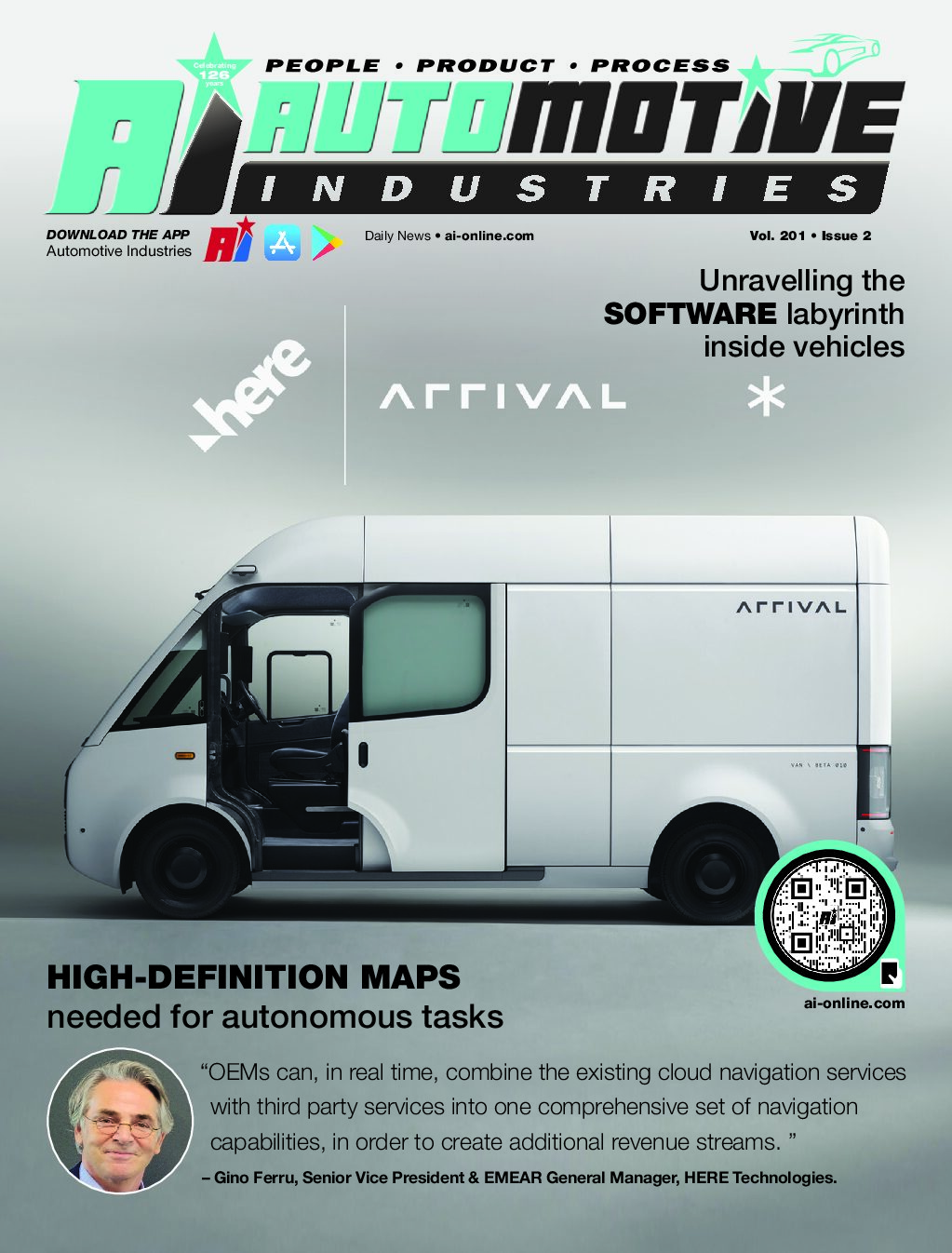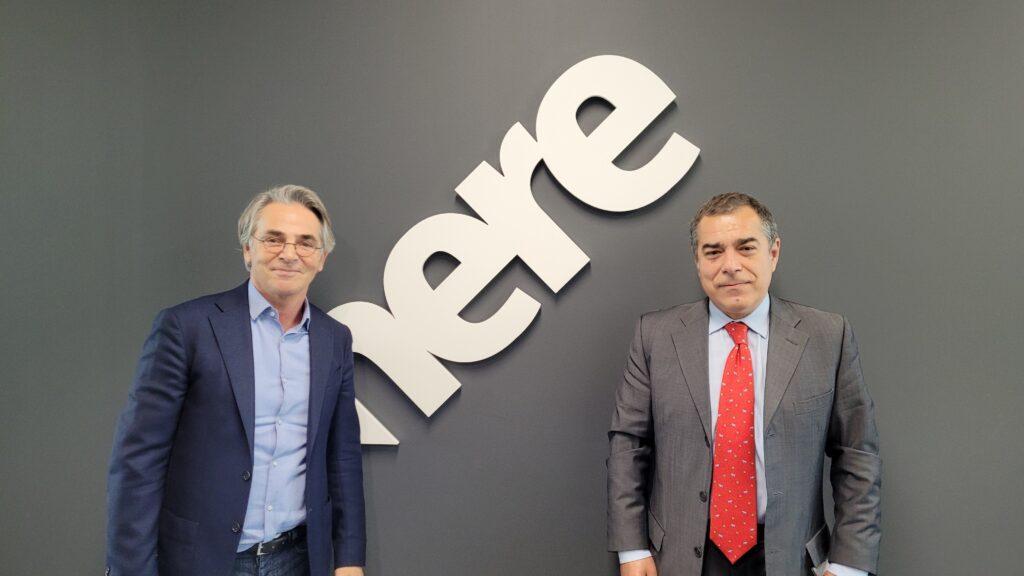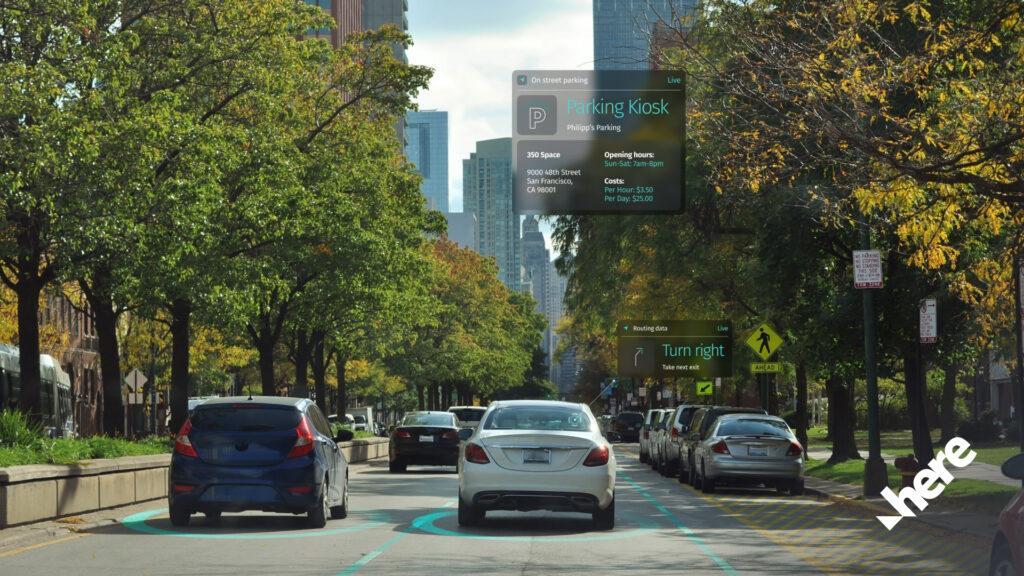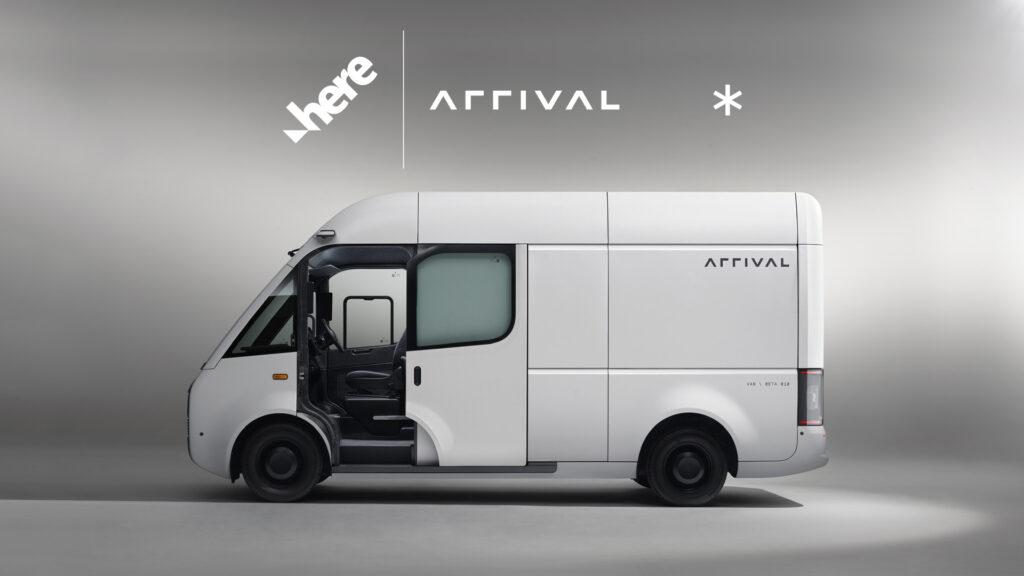
Onboard mapping technology has evolved from an electronic version of a map to being an integral element of the systems controlling autonomous and semi-autonomous vehicles.
Global demand for high definition (HD) maps for autonomous vehicles is predicted to grow from US$1.4 billion in 2021 to US$16.9 Billion by 2030, according to ResearchAndMarkets.com.
Automotive Industries (AI) asked Gino Ferru, Senior Vice President & EMEA General Manager, HERE Technologies, why there was a move to cloud-based mapping systems.
Ferru: Cloud-based systems are the future because the delivery mechanism is easier. It is easier to provide more real time updates. And it is easier to enhance functionality by including services in the cloud setup. OEMs can, in real time, combine the existing cloud navigation services with third party services into one comprehensive set of navigation capabilities, in order to create additional revenue streams.

What we are also seeing is that the OEMs, are getting closer to the hyperscalers. For example, Stellantis and BMW have announced they are collaborating with AWS and Microsoft on projects to develop a software-designed vehicle. HERE is in the midst of these developments, as the leading location platform in the automotive industry.
AI: What is the significance of real-time traffic navigation and how does BMW’s adoption of HERE’s platform for real-time traffic information exemplify this?
Ferru: Even though BMW is one of our shareholders, we had to compete hard for the business. Each and every feature set has been tried and tested. HERE is in all BMWs produced from 2020 and most of those produced in 2018 and 2019 through an OTA. This includes the 7 Series.
It will enhance the experience of driving a BMW because the navigation system will not only take you from A to B, but will also inform you about traffic jams ahead and provide alternative routes. Real time accurate traffic information is also very important for commercial and delivery vehicles.
AI: How do mapping technologies tie directly into the development of automated driving, such as your work with Mercedes-Benz as the first company to provide HD maps in production series vehicles?
Ferru: High-definition (HD) maps are the technology enabler for autonomous driving. The maps need to be updated in real time with precise positioning, tracking the car even if it moves just an inch. The technology is advancing quickly. In China they are already into using robotaxis, and there are pilot autonomous zones in the United States.
But the big, big breakthrough is the decision by the German Federal Motor Transport Authority to allow the Mercedes S Class to be used with Level Three autonomous driving capabilities on a selected number of German highways. It is a big deal, because it is the first time a European brand has been granted approval for autonomous driving.
For HERE it is a big deal because it is the first time that our technology will be used for Level Three autonomous driving on public roads.
I am excited because at the center of any autonomous system will be HD maps. Autonomous cars cannot rely on cameras alone. The camera system has to be integrated into the maps to provide a comprehensive set of driver and autonomous driving functionality. We are one of the few companies today to have global HD maps.
AI: There are some people who argue that the location data does not have to be as detailed as you describe.

Ferru: It depends on what you want to do with the map. For autonomous and semi-autonomous commercial vehicles, delivery drones and vessels, you need detailed maps. Once there is more widespread use of HD maps for autonomous driving by premium brand passenger cars and commercial vehicles, the cost of the technology will come down.
AI: How is HERE working with electric vehicle (EV) manufacturers such as Arrival, Volta Trucks, Vinfast, and JLR to improve mapping tools?
Ferru: The challenge that we have is that the coverage of EV charging points is still limited, and the range of the car is around four or five hundred kilometers. EV vehicle OEMs need to build in capabilities that make the driver to feel absolutely comfortable that they will find an EV charging point on the journey, and for the navigation system to select an optimized route.
They also want to know the availability, the cost and what facilities there are near the charging station.
Our EV solution includes data points on charging stations. In addition, it tells you how long you can expect to wait, the availability, and the connectors. We provide EV routing options which take into consideration the real time depletion of the battery combined with map attributes like road roughness and topography.
The next generation of EV capabilities will include artificial intelligence to optimize routing. It will take more data points into consideration, such as weather and parking. The EV calculation engine will be able to provide personalized routing. With many OEMs having announced that they will phase out internal combustion engines between 2028 and 2030, there continues to be a focus on using routing to extend range. And we have a solution based on our maps.
AI: How does the company continue to push automotive tech forward, through developments such as Intelligent Speed Assistance map for automakers to comply with EU regulations?
Ferru: From July 2022, all OEMs supplying cars into the European Union (EU) will need to meet intelligent speed assistance (ISA) standards and regulations. That means all cars need to have real time speed limit data available as part of the navigation or infotainment system. HERE is providing our ISA Map to 15 OEMs and more than 30 of their brands.
Now, the level of degradation of data on ISA averages 10% per year, which means it needs to be maintained. You can only make that significant investment if you have a critical mass of the business. Our solutions have been tested by a large number of OEM engineers. All the tests have been positive. We are going to provide ISA data as a service moving forward.
I think that this legislation will also be introduced in the United States, and we have already seen some US OEMs looking into providing ISA data as an additional service.
The second element is the European New Car Assistance Program (NCAP), where we are helping OEMs by ensuring that the HERE technology components are NCAP certified, which helps them to attain a 5 Star NCAP rating. NCAP will be rolled out globally.
AI: What are HERE Technologies’ overall strategy and vision for the future?
Ferru: The company has been in business for more than 30 years, and we are expanding from passenger cars and commercial vehicles into sectors like two wheelers and buses. We

provide global coverage, and we continue investing to ensure that the maps remain up to date and that we meet the high-definition requirements of the future.
There is a big focus on the concept of software-defined vehicles. Software design for the car of the future will focus on both the passengers and driver. That means enhanced infotainment systems. What we also see is the integration of driver safety systems, which could be built into a single stack instead of one stack for navigation, and another for autonomous driving.
We are going to see the level of connectivity between cars and the environment increasing. For example, the vehicle will inform the driver of places to eat, parking spaces or the cheapest fuel, along with discounts offered. So, location-based services will become dominant in the software-defined car.
We are also going to see much more entertainment in the car. So, in the future, you will be doing other things in your car, while it safely moves from A to B. It is exciting. And I think it is just around the corner.
The other trend will be for OEMs to make money out of the services provided in a software-defined car. And then connectivity is going to be even more important. 5G needs to be available at a global scale in order to be support these exciting technical innovations.
On the commercial side, HERE Technologies has entered into a five-year strategic collaboration agreement with Amazon Web Services (AWS) to help organizations improve their supply chain visibility, transportation and logistics (T&L), fleet routing, and estimated times of arrival (ETAs) from the first-to-last mile of delivery.




More Stories
Why You Should Invest in Regular Car Washes to Protect Your Investment
Lakshmi Prasad Bhatta on the quest for zero road deaths
Workers’ Compensation for Repetitive Stress Injuries